
THE REAR SONAR SYSTEM IS JUST ONE FORM OF DRIVER ASSISTANCE OFFERED IN SOME NISSAN AND INFINITI VEHICLES. IT IS AN EXCELLENT ADDITION TO VEHICLES, PROVIDING ANOTHER LEVEL OF DRIVING CONVENIENCE TO ITS OPERATOR. AFTER READING THIS ARTICLE, YOU WILL HAVE AN UNDERSTANDING OF HOW THE SYSTEM WORKS AND KNOW BASIC TROUBLESHOOTING TIPS THAT WILL HELP MAKE DIAGNOSIS AND REPAIR OF THE SYSTEM EASIER.
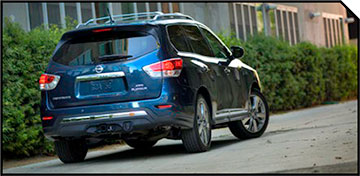
System Basics
The rear sonar sensors transmit a sensor signal to the sonar control unit (SCU) when detecting an obstacle at the rear of the vehicle. The SCU changes the output of the sonar display and the warning buzzer output frequency changes 4 levels (for center) and 3 levels (for corner) according to the detection distance condition. When the system is working correctly, it will beep slowly when the vehicle approaches an obstacle. As the vehicle gets closer to the obstacle, the beep will become faster. When the rear end of the vehicle is less than 10 in from the object, the beep becomes continuous. If the system detects a motionless object farther than 10 in from the side of the vehicle, the beep will sound for three seconds. The system aims to detect objects up to 6 ft from the bumper (detection range approximately 1.8 m (5.9 ft) maximum). The outer corners of the bumper have reduced coverage, and the system only detects objects that are stationary or moving slower than 3 MPH.
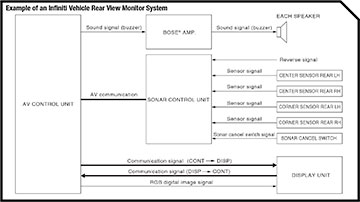
The system diagrams for Infiniti (left) and Nissan (right) vehicles look different in the ESM, but both vehicle types have four rear sensors. In Infiniti models, drivers can cancel the sonar system’s alert by using the Rear Sonar System (RSS) OFF switch on the instrument panel. Also, the sonar sensor’s warning is played through the speaker system via the BOSE® amplifier. In Nissan vehicles, the signal is heard through the sonar buzzer. In each vehicle, the sonar control unit (SCU) is below the steering wheel and easily seen when the lower instrument panel is removed.
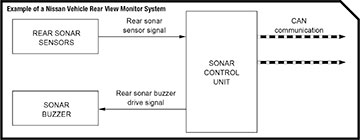
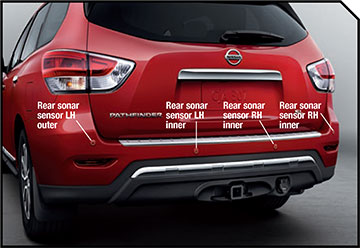
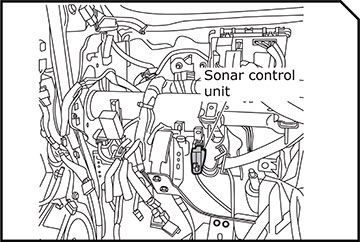
The main components of the system are the four rear sensors, the SCU and the sonar buzzer. The sonar system starts when the vehicle is put in reverse. The outer sensors detect three levels of distance, and the center sensors detect four levels of distance. In Nissan vehicles, the sonar sensors transmit a sensor signal to the SCU, which converts it into a detection distance signal that is sent to the combination meter via CAN communication. In Infiniti vehicles, the sonar sensors transmit a signal to the audiovisual (AV) control unit via AV communication. In vehicles equipped with display units that act as rear view monitors when the vehicle is in reverse, the communication signals are transmitted from the sensors to the SCU, to the AV control unit, and then to the display unit and the amplifier for the buzzer to sound.

Note: If a vehicle owner wants to connect a trailer hitch, use the CONSULT Work Support item TRAILER HITCH MODE to turn OFF the center sensor warning buzzer.
Performing Diagnosis
If you receive a repair order to fix a rear sonar sensor concern, obtain any information you can about the symptoms from the customer to help check it out. Connect CONSULT and perform “Self Diagnostic Result” for “SONAR.” If a Diagnostic Trouble Code (DTC) is displayed, refer to the DTC index and perform the necessary tests since you know where the trouble lies. Chances are a DTC will appear, but if no DTC code is displayed:
- Check to see if mud or other foreign objects are adhering to the sonar sensor.
- Check for deformation, scratches, or other damage to the sonar sensor.
- Check for water accumulated in the sonar sensor.
The system has a self-diagnosis feature that is accessed by the sonar button.
Self-diagnosis Function
The sonar control unit is capable of self-diagnosis. It can detect sensor malfunction or sensor harness open circuits. There are four modes of self-diagnosis: entering diagnostics, requesting number of fault codes, requesting fault codes and idling or clearing fault codes. Be sure to follow these steps in order.
Diagnostic Mode
1. Turn the ignition switch ON. The Rear Sonar System OFF switch indicator lamp will illuminate for 3 seconds and then turn OFF.
2. Immediately push the Rear Sonar System OFF switch ten times within 5 seconds.
3. The sonar buzzer will sound once, and the Rear Sonar System OFF switch indicator will flash once.
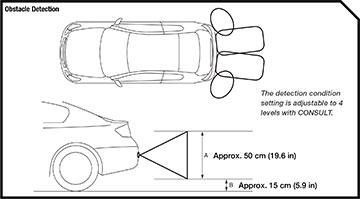
Although the sensors respond to slightly different measurements before they sound the buzzer, the work flow for their inspection and repair is the same. The warning buzzer has four levels of alerts for the rear center sensors and three levels for the rear corner sensors. The sensor that is closest to the detected object determines the buzz alert when more than one sensor detects an object. Determine which sensor needs to be repaired according to the DTC displayed on CONSULT. The SCU controls the buzzer’s cycle range, which is adjustable with CONSULT.
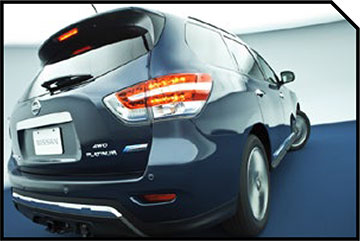
Use the following tests for the inspection to determine necessary repairs:
The first test is to check the rear sonar sensor circuit continuity.
- Turn the ignition OFF
- Disconnect the SCU and the sensor you are testing.
- Check continuity and connectors between the SCU and the sensor in question. The locations of each are found in the Service Manual’s wiring diagrams.
- Check continuity between the SCU connector and the ground.
- If inspection results are not normal, repair or replace the harness or the connectors for the sensor in question, as necessary.
The next test is to check the rear sonar signal circuit to the battery.
- Turn the ignition ON.
- Check the voltage between the SCU connector and the ground. If the results are normal, replace the sensor being tested. If the result is not normal, repair or replace the harness or connectors.
To test the sonar buzzer, repeat the same test procedures that were used for the sensors with the addition of a third test. Check the sonar buzzer signal circuit to the buzzer power.
- Turn the ignition OFF and check the continuity between the sonar control unit connector terminals.
- If the results are normal, the buzzer may need to replaced, and if not, the harness or connectors are likely in need of replacement.
If CONSULT indicates that the malfunction is due to the SCU, follow this procedure:
- Check for blown fuses.
- With the ignition ON if there are no blown fuses, examine the power supply circuit by checking the voltage between the SCU harness, connector, and ground. If the result is abnormal, the problem lies in the SCU power supply harness.
- If the result is normal, turn the ignition back to OFF and disconnect the SCU connector.
- Check the ground circuit by examining continuity between the SCU harness connector and ground. If you discover a problem with the harness, repair or replace it, as necessary.
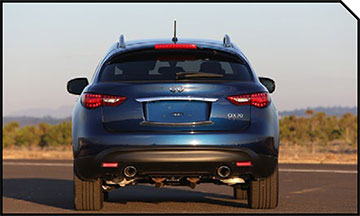
If you have to replace the SCU, be sure to save or print the current vehicle specifications before performing the job.
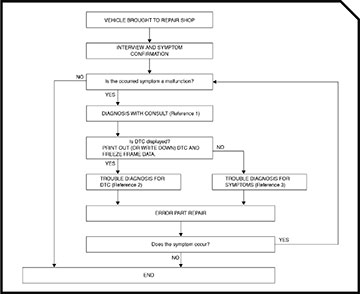
![]()
- When replacing the sonar control unit, you must perform “Select Saved Data List” or “After Replace ECU” with CONSULT
- Complete the procedure of “Select Saved Data List” or “After Replace ECU” in order.
- If you set incorrect “Select Saved Data List” or “After Replace ECU,” incidents might occur.
- Configuration is different for each vehicle model. Confirm configuration of each vehicle model.
- Never perform “Select Saved Data List” or “After Replace ECU” except for new SCU.